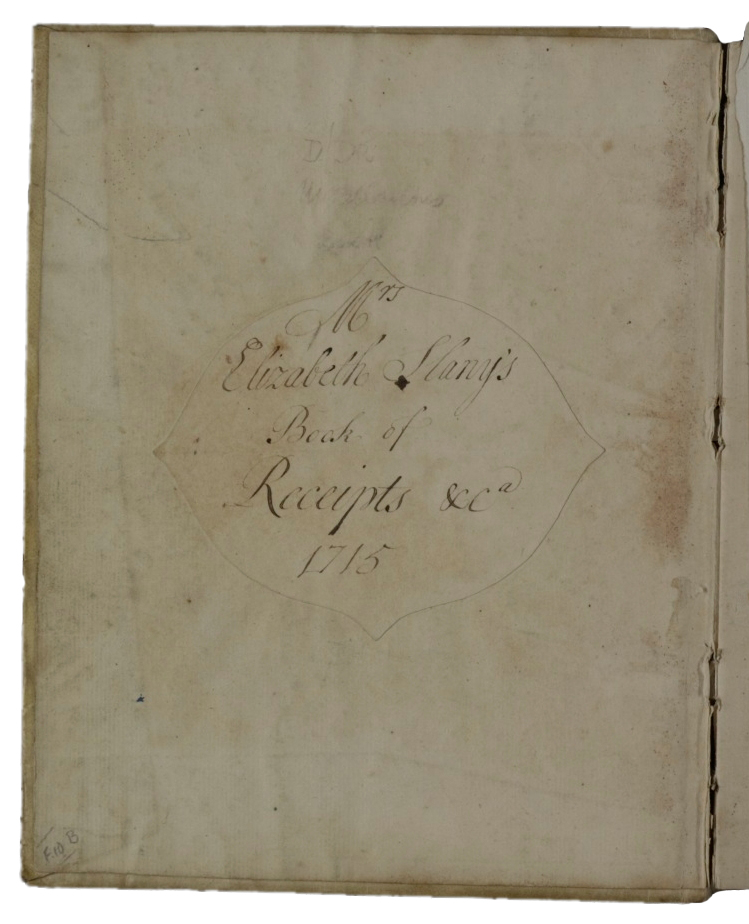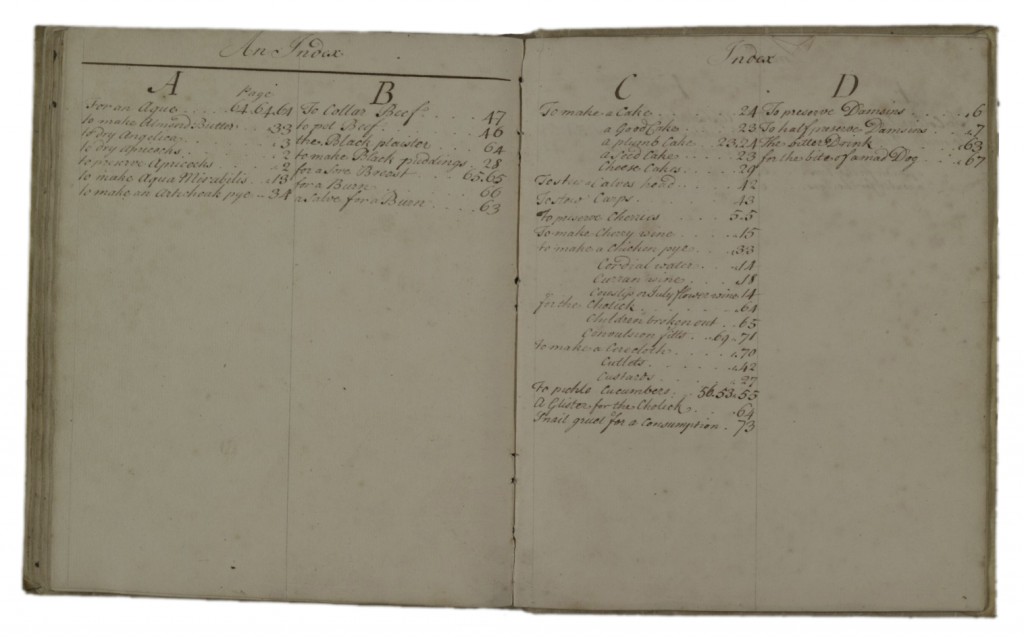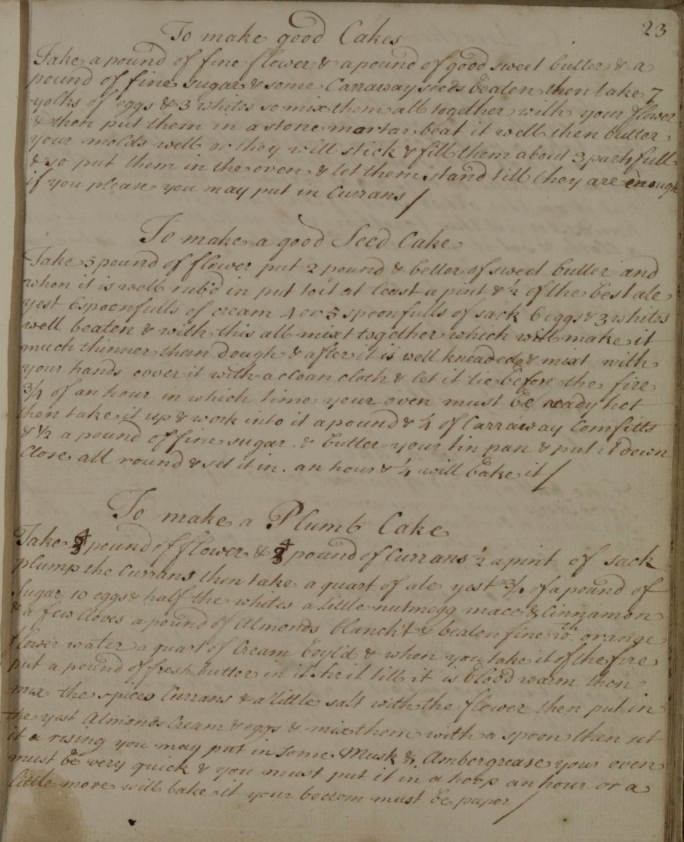Our recipes series is back! We had a little break in transmission while we prepared for and then recovered from our Heritage Open Day, but we’ve plenty more recipes from the archives to share with you.
I don’t know about you, but I’ve become rather hooked on the BBC’s Great British Bake Off, and it really brings home to you the knowledge and skills that you need to be a really successful baker.
It must have been even more challenging, then, with no refrigerators to keep your ingredients fresh, and no easy switch to flick to turn on your oven to the desired temperature. This makes the elaborate recipes we find in the archives even more amazing.
One of the most extensive recipe books in the ERO belonged to Elizabeth Slany, who began recording her recipes in 1715. Elizabeth was born near Worcester, and in 1723 she married Benjamin LeHook, a factor (or agent) in the City of London.

As mistress, Elizabeth would have been responsible for the running of the household, and the health of its members. Her book suggests that she embraced this challenge with gusto; not only does it include sections on meat and fish, pies, pastries, cakes, sweets, preserves, pickles, cordials and wines, it also includes medicines, salves and ointments. All of these recipes were carefully indexed at the back of the book.
Eighteenth-century food (at least for those with a substantial income) was rich and elaborate, and required a great deal of preparation. Dishes – savoury and sweet – tended to be heavily flavoured to disguise the flavour of tainted meat or butter.
Caraway seeds, almonds, mace, cloves and other spices were frequently used to flavour cakes, as evidenced in these recipes fromElizabeth’s book:
To Make Good Cakes
Take a pound of fine flower & a pound of fine sugar and some carraway seeds beaten then take 7 yolks of eggs & 3 whites & mix them altogether with your flower & then put them in a stone mortar & beat it well then butter your moulds well or they will stick fill them about 3 parts full and put them in the oven & let them stand till they are enough if you please you may put in more currans.
To make a Good Seed Cake
Take 5 pound of flower put 2 pound & better of sweet butter when it is well rub’d in put to it at least a pint & ½ of the best ale yest [yeast] 6 spoonfulls of cream 4 or 5 spoonfulls of sack [a type of white wine] 6 eggs & 3 whites well beaten with this all mixt together which will make it much thinner than dough & after it is well kneaded & mixt with your hands cover it with a clean cloth & let it lie before the fire ¾ of an hour in which time your oven must be ready hot then take it up & work into it a pound & a ½ of carraway comfitts &1/2 a pound of fine sugar & butter your tin pan & put it down close all round & set it in. An hour & ½ will bake it.
To make a Plumb Cake
Take 4 pound of flower and 4 pound of currans ½ a pint of sack plump the currans then take a quart of ale yest ¾ of a pound of sugar 10 eggs & half the whites a little nutmeg mace & cinnamon & a few cloves a pound of almonds blanch’t & beaten fine orange flower water a quart of cream boyl’d + when you take it of the fire put a pound of fresh butter in it heit [heat] till it is blood warm then mix the spices currans & a little salt with the flower then put in yest almonds cream eggs & mix them with a spoon then set it rising you may put in some musk & ambergrease [a waxy substance that originates in the intestines of the sperm whale, with a pleasant smell, which is also used in perfumery]your oven must be very quick and you must put it in a hoop an hour or a little more will bake it your bottom must be paper.
Note that the plumb cake mixture should be heated until ‘blood warm’ (and also that it doesn’t include any plums!).
Elizabeth lived to the grand age of 93, dying in 1786. Her eldest daughter Elizabeth LeHook married Samuel Wegg, who was the son of George Wegg ofColchester, a merchant tailor and town councillor. It was through the Wegg family that the book came toEssexand ultimately to the ERO.
The book is catalogued as D/DR Z1, and you can view images of the entire book here by the magic of Seax. Let us know if you try out any of the recipes!
See also: ‘Mistress Elizabeth Slany’s Book of Recipes’, Daphne Smith, Essex Countryside, Feb 1966, vol. 14 – in ERO Library


